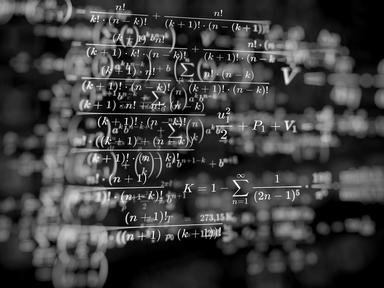Quiz Answer Key and Fun Facts
1. We'll start off relatively easy. Two, four, six or eight: which is a possible number of elements in a square or n x n matrix?
2. A perfect number is a number that is equal to the sum of its positive divisors or factors. Two, four, six or eight: which one of these is a perfect number?
3. Two, four, six or eight: which is the only one that could be the volume of a cube with integer values for length, width and height?
4. In algebra a quadratic function is a polynomial of the second order, meaning it has a maximum exponent of two of its terms. Two, four, six or eight: what is the maximum number of real roots or zeroes for a quadratic function?
5. Two, four, six or eight: what is the quotient that results from taking the number of sides in a icosagon divided by the number of sides in a decagon?
6. It is well known that the constant pi relates the diameter of a circle to its circumference. Two, four, six or eight: which number is the closest in value to the distance a wheel of diameter one travels through two complete revolutions?
7. How about a little calculus? Two, four, six or eight: which value is equal to the third derivative of the function y = x^3 (x cubed)?
8. The binary number system is widely used by computers and consists of only 1s and 0s as digits. Two, four, six or eight: which number is represented as 1000 in the binary system?
9. The Fibonacci Sequence is the sequence of positive integers where each term is the sum of the previous two numbers starting with one. Two, four, six or eight: which of these is the first number NOT represented in the Fibonacci Sequence?
10. An irrational number is a real number that cannot be expressed as the ratio of two integers. Two, four, six or eight: the square root of what number is the length of the hypotenuse of a right triangle with sides of one unit and was the first discovered irrational number?
Source: Author
logikzer0
This quiz was reviewed by FunTrivia editor
rossian before going online.
Any errors found in FunTrivia content are routinely corrected through our feedback system.
